Key takeaways:
- Exchange scams exploit emotions, often promising unrealistically high returns to lure investors.
- Recognizing common scam signs, such as urgent calls to action and poor communication, is crucial for safety.
- Best practices for account security include enabling two-factor authentication and using unique passwords.
- Verifying a platform’s legitimacy through regulatory registration, user reviews, and operational history is essential before trading.

Understanding exchange scams
Exchange scams often operate under the guise of legitimate trading platforms, luring unsuspecting investors with promises of high returns. I remember my first foray into cryptocurrency investing; the excitement was palpable as I explored various exchanges, but I quickly learned that not every platform has the user’s best interest in mind. It makes you wonder, how can we navigate this landscape safely?
These scams can range from phishing schemes to Ponzi-like structures where the scammer promises unrealistically high profits. I once stumbled upon a flashy site that claimed to double my investments overnight. It was only after a friend alerted me that I realized the danger; the whole setup felt off. Reflecting on that experience, I still ask myself: How easy was it for me to have been duped simply by the allure of quick gains?
Understanding the psychology behind these schemes is crucial for protecting oneself. Scammers exploit emotions, preying on greed and urgency to get users to act quickly. Trust me, taking a moment to pause and question these bold claims could save you a lot in the long run. Have you ever felt that rush of wanting to be a part of something big? It’s in those moments we must be the most vigilant.
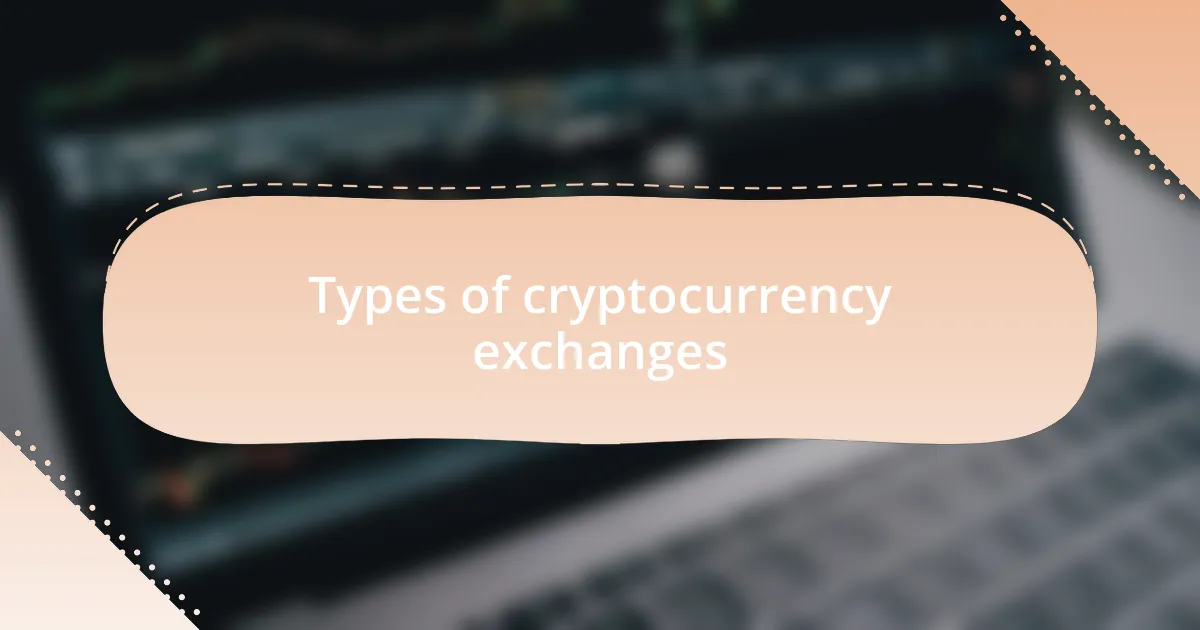
Types of cryptocurrency exchanges
There are several types of cryptocurrency exchanges, each with its own unique features and benefits. Centralized exchanges, for instance, are platforms where a central authority manages the trading process. I remember using one of these when I first started; the user-friendly interface made trading feel straightforward. However, it struck me later how reliant I was on that central authority, raising the question: What happens if the platform is compromised?
On the other hand, decentralized exchanges (DEXs) offer a different approach by allowing peer-to-peer trading without a middleman. My experience with a DEX was eye-opening; I had to navigate the platform with greater caution. Although it felt empowering to have control over my trades, I quickly realized that the responsibility was solely mine. Did I really know enough to avoid pitfalls there?
Lastly, there are hybrid exchanges that combine elements from both centralized and decentralized platforms. I encountered one of these during a deep dive into trading options. It offered the security of a DEX while maintaining some of the conveniences of a centralized setup. This blend piqued my curiosity: could this be the best of both worlds, or was it merely a facade? Understanding these types of exchanges is critical as they form the backbone of our trading decisions and, ultimately, our safety in the crypto landscape.
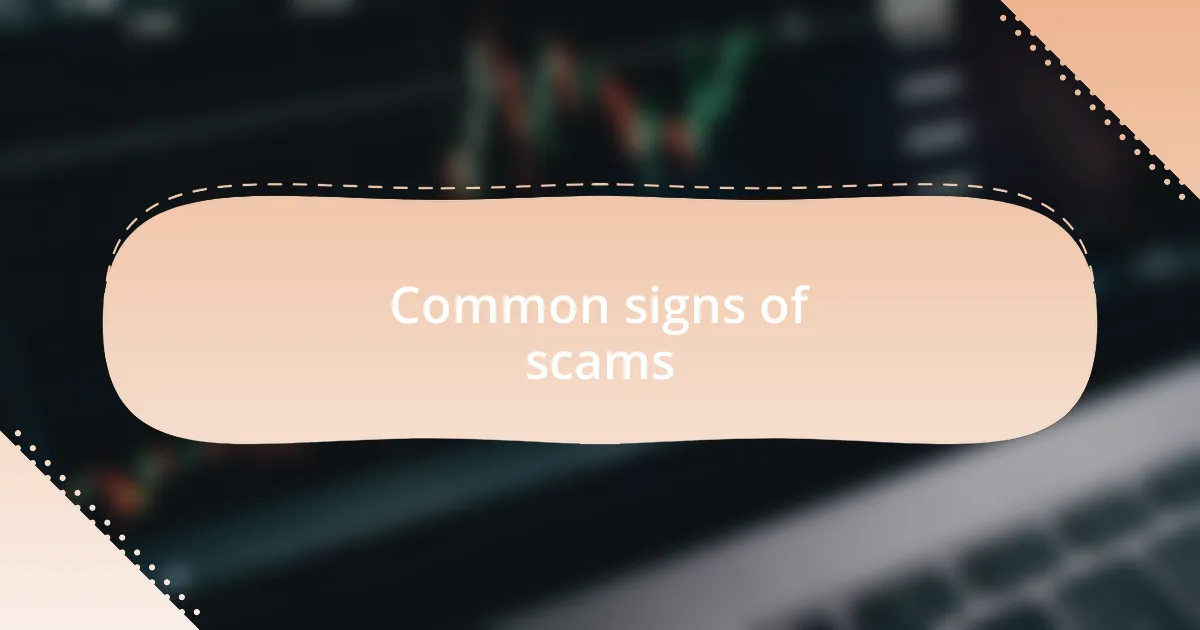
Common signs of scams
One common sign of scams is offers that seem too good to be true, such as promises of guaranteed high returns. I remember coming across an advertisement claiming I could double my investment in just a week. I felt a mixture of excitement and skepticism; deep down, I knew this was a classic red flag. If it sounds unbelievable, it probably is.
Another warning sign is the pressure to act quickly. Scammers often create a sense of urgency, pushing you to make hasty financial decisions. I once received a message urging me to invest in a hot new token before it “blew up.” I hesitated and decided to research instead; that instinct saved me from a potential loss. Taking your time isn’t just wise—it’s necessary.
Lastly, poor communication or lack of transparency from the exchange can indicate a scam. When I faced a delay in withdrawing funds, I struggled to get answers from customer support. The vague responses only fueled my concern. If an exchange isn’t forthright about its processes, shouldn’t that raise a warning bell for anyone considering their services?
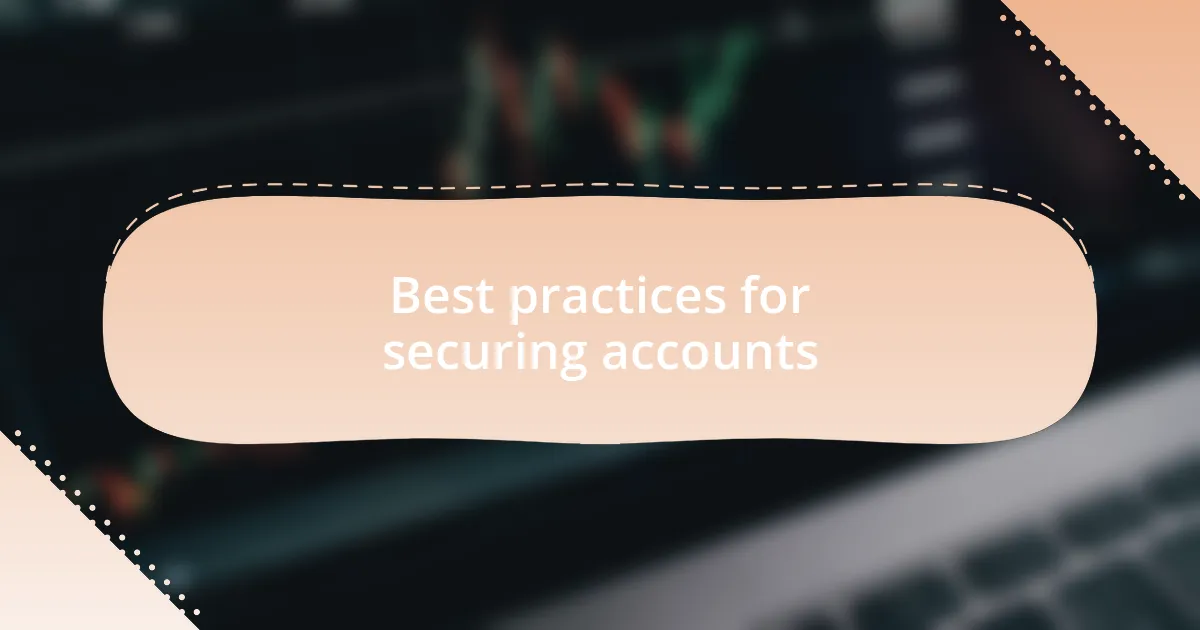
Best practices for securing accounts
Using strong security practices is essential for safeguarding your cryptocurrency accounts. One of the most effective methods is enabling two-factor authentication (2FA). I recall the relief I felt when I activated it on my primary exchange. Knowing that my account required not just a password but also a secondary code gave me peace of mind, especially because it added an extra layer of protection against unauthorized access.
Another best practice I emphasize is regularly updating passwords and using a password manager. I’ve had my share of password fatigue, but switching to a password manager allowed me to create unique, complex passwords without the hassle of remembering them. Have you ever thought about how often you use the same password across multiple platforms? This can be a huge risk, and taking the time to create distinct passwords can significantly reduce vulnerability.
Be cautious about connecting your accounts to third-party services. I vividly remember when I tried linking a wallet to a trading bot; the ease was tempting, but I did my research first. Some services may compromise your account security. Always ensure any third-party service you use has a trustworthy reputation and provides solid security measures. Have you looked into how well these services protect your information? It’s worth the effort to ensure that your crypto investments stay safe.

Researching a reliable exchange
When I started trading cryptocurrencies, I realized how crucial it was to find the right exchange. I often spent hours comparing features of different platforms, seeking out user reviews, and checking their security records. Have you ever felt overwhelmed by the sheer number of options available? It’s important to prioritize exchanges that not only seem user-friendly but also have a solid history of protecting their users’ assets.
I remember the first time I almost registered with an exchange that promised high returns but had little information about its operations or regulations. My instincts kicked in, and I opted for a more established platform backed by positive user feedback. This experience taught me the importance of transparency; exchanges should clearly outline their fee structures and operational practices. It made me wonder: how often do we overlook these essential details in favor of shiny marketing?
Additionally, I find it helpful to make sure that the exchange I’m considering adheres to regulatory standards and has a reputable backing. For instance, knowing that an exchange is licensed can significantly increase my trust in their operations. Have you ever asked yourself what safeguards are in place to protect your investments? Taking the time to verify these details can be the difference between a positive trading experience and a potential scam.
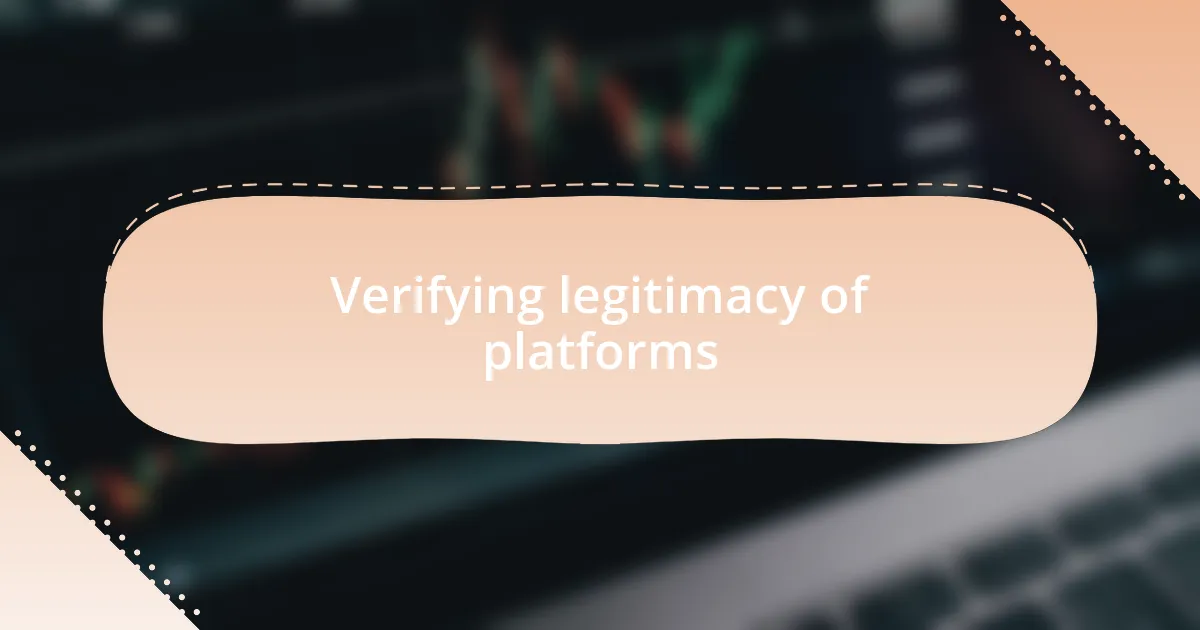
Verifying legitimacy of platforms
Verifying the legitimacy of a cryptocurrency platform is a critical step I never skip. I often check for registration with relevant financial authorities, as this adds a layer of legitimacy. When I see the regulatory logos on a site, it reassures me that the exchange follows legal standards—have you looked for these, too?
In my experience, reading reviews can be a double-edged sword. While I cherish user feedback, I’ve learned to be skeptical of overly positive testimonials that feel scripted. Once, I encountered a platform that had glowing reviews all over the internet but little presence on independent forums. It prompted me to dig deeper into discussions from real users—what about you? Are you mindful of where you gather your information?
Lastly, I always dive into an exchange’s operational history. Understanding its uptime and any previous security breaches can shed light on its reliability. I vividly recall when I chose to investigate a platform that suffered a hack; it was clear why many users were hesitant post-incident. Evaluating a platform’s past can illuminate its future—what patterns do you notice from your research?
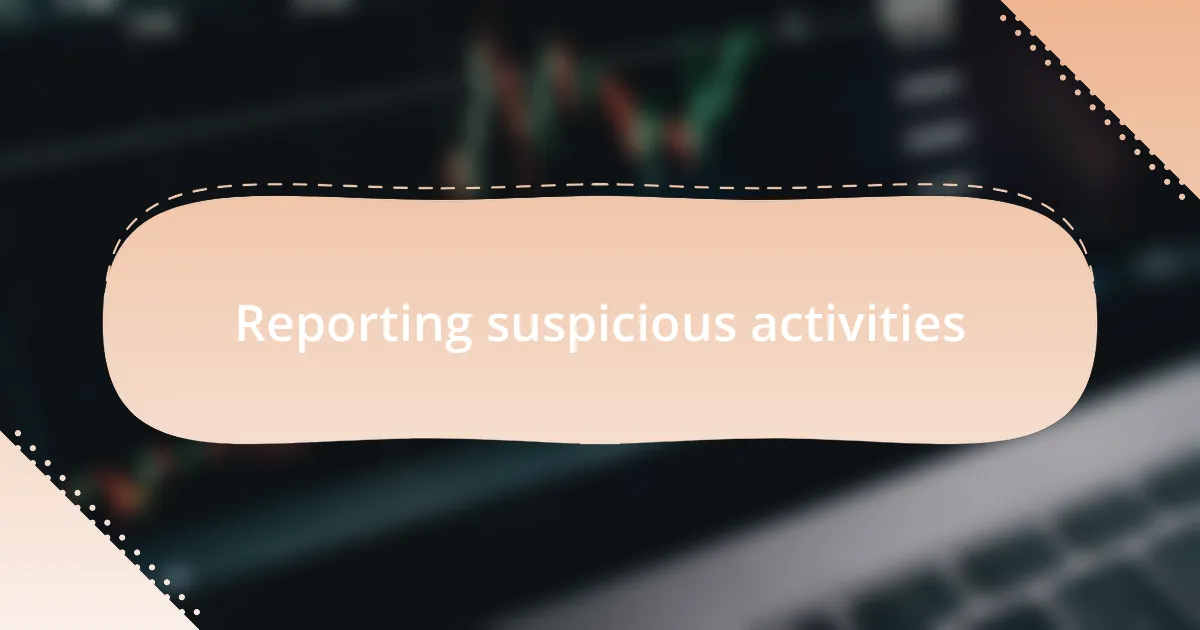
Reporting suspicious activities
When I suspect something is off with a cryptocurrency transaction or platform, I don’t hesitate to report it. I remember the time I noticed unusual withdrawals from my account; it felt alarming, and I swiftly contacted the exchange’s support. Reporting such suspicious activities not only protects my interests but also helps safeguard the broader community—have you ever thought about the impact your report could have on someone else?
Taking the step to report can be daunting, especially if you fear it might not lead to immediate action. Nevertheless, I find that sharing my concerns creates a ripple effect that encourages others to speak up too. For instance, I once alerted a platform about a potential phishing scheme that targeted users, and watching the exchange proactively address the issue made me feel empowered. Isn’t it reassuring to know you might prevent someone else from falling victim?
It’s crucial to document every detail when reporting. I recall meticulously compiling information about a suspicious advertisement claiming affiliation with a leading exchange. This diligence not only assisted in the investigation but also reinforced my trust in the platform as they promptly addressed the concern. Have you kept a log of anything unusual? Taking these steps can be invaluable in ensuring our digital safety.